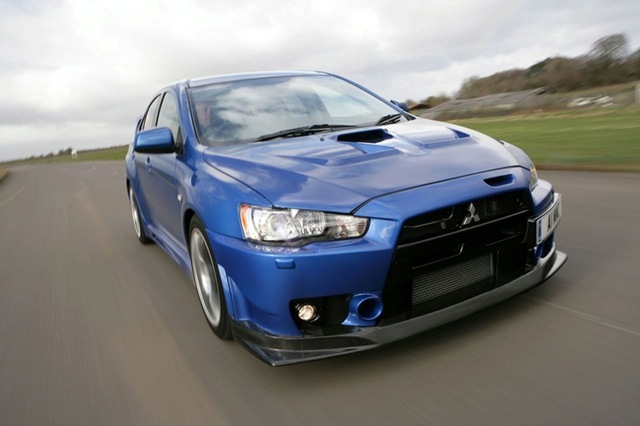Zero to sixty can be an elevator ride when you’re working with a prehistoric 4.6-liter Mustang with the same power to weight ratio as a fat kid licking sprinkles off the counter of an ice-cream shop. While it is possible to make any vehicle faster, you won’t have to work as hard when it’s already spry.
With only a few basic bolt-ons, a Mitsubishi Evo can run a solid 12.8-seconds down a quarter mile. The 2JZ motor of a Toyota Supra can tear apart just about anything on the street, when combined with 14 pounds of boost. You do have to consider that a late-generation, 3,400-pound Supra, was more like a lumbering cowboy, meandering out of an all-you-can-eat barbecue pit. Updated (heavier) models are not always preferred where performance is the main goal.
In 2007, BMW gave executives a new reason to endure the 9 to 5 grind, besides Starbucks, tennis lessons, and the occasional happy ending at a massage parlor. Five hundred horsepower, and 150 mph come quickly to a twin-turbo 3.0-liter BMW 335i, with the addition of an AMS turbo upgrade, AEM water injection, and limited-slip rear differential.
Recipe to Success
The standard recipe for performance is a cold air intake, exhaust, and performance tune. This combo will do wonders for a Z05 Corvette, but not so much for an Acura Integra LS. When you’re dealing with a couple wheezing ponies, a cone filter and “fart can” are only good for collecting bugs and irritating crotchety neighbors. In this case, an engine rebuild is the better way to go.
The original 1.8-liter Integra engine offered 130 horsepower. However, it can be modified into a 235 horsepower street performer with the addition of a ported cylinder head, connecting rods, pistons, camshafts, modified intake manifold, larger fuel injectors, 68mm throttle body, and Hondata management system. For engines that will require extensive modification to reach your goal, there is always a full engine swap.
The K20 (K20a2) swap is a common modification for Honda Civics. When combined with an RBC manifold and headers, it can produce 220 horsepower (160 ft-lbs torque), which is enough to clear a quarter mile in under 13-seconds. This same Civic can be updated to over 500 horsepower with the addition of a downpipe, intercooler, 46mm wastegate, and 62/62 turbo. You can add a turbo (or supercharger) to any naturally-aspirated engine for big gains.
Budgeting Tricks of the Trade
When $2,500 is enough to produce the same results as what has taken others $25,000 to accomplish; your grandparent’s $5 birthday check will assume a new appreciation. Here are a few tricks to building performance on a budget.
- Do it once, and do it right. Buying used, quality name brands are better than cheap, new parts. A rebuilt turbo can be found at a fraction of its original cost, and will perform circles around an eBay knock-off.
- Lend your car to science. One way to get performance at a discount (sometimes free), is to search the web for companies looking for guinea-pig cars to test their prototypes.
- Less weight equals more horsepower. For every 50 pounds of weight (seats, carpet padding, cast iron parts, etc.) you eliminate, you are essentially adding 1 free horsepower (of the seat of the pants variety).
About Dr. Eric J. Leech
Eric has written for over a decade. Then one day he created Urbasm.com, a site for every guy.
